chapter 1 student movement for racial equality - Campus Activism
chapter 1 student movement for racial equality - Campus Activism
chapter 1 student movement for racial equality - Campus Activism
Create successful ePaper yourself
Turn your PDF publications into a flip-book with our unique Google optimized e-Paper software.
1984, p. 48). The <strong>student</strong> factions compromised, deciding to continue the direct action<br />
strategy and also to pursue voter registration of blacks in the Deep South. The activists<br />
then headed south.<br />
Meanwhile at UT, the controversy over segregated university facilities was<br />
heating up. In January 1961, <strong>student</strong>s began picketing the segregated theaters on the<br />
Drag in increasing numbers following scuffles between hecklers and picketers. By<br />
February, the stand-in crowd had grown to over 500 <strong>student</strong>s. Faculty members began to<br />
support the protesters at this time, with 260 signing an Austin American Statesman<br />
advertisement <strong>for</strong> theater integration (Duren, 1979).<br />
Segregated university housing was increasingly opposed by <strong>student</strong>s during the<br />
spring. In May, the regents received petitions from the Student Assembly and the Faculty<br />
in favor of integration of housing and athletics; over 7000 signed the pro-integration<br />
petition. However opposition continued; 1300 <strong>student</strong>s signed a petition opposing the<br />
integration of dorm (ibid.). The majority of <strong>student</strong>s did support integration by this time.<br />
A poll conducted in May 1961 indicated that roughly 60% of the <strong>student</strong>s favored "equal<br />
access to all University-owned facilities," (ibid.).<br />
The Board of Regents ignored the opinions of the faculty and <strong>student</strong>s by<br />
unanimously adopting a policy opposing integration at its July meeting. They issued a<br />
statement saying:<br />
Whether or not we agree with the decisions of the Supreme Court on <strong>racial</strong><br />
integration, we shall in good faith proceed and have hereto<strong>for</strong>e proceeded<br />
along this path with all deliberate speed…. We have a heavy<br />
responsibility to per<strong>for</strong>m, and we respectfully ask you to trust our<br />
judgment. We do not feel that any substantial changes should be made<br />
in the immediate future, but we shall continue to move <strong>for</strong>ward with due<br />
and deliberate speed as we think advisable under all the circumstances<br />
which exist from time to time (ibid. - emphasis added).<br />
This statement reflects the paternalism, arrogance and intransigence on the part of<br />
the regents which has been a characteristic attitude of the body toward social change.<br />
The decision was a slap in the face to the university community and demonstrated the<br />
lack of democracy within the university structure. 7 The fact that they reached this<br />
decision during the summer months when most <strong>student</strong>s were not on campus reflects<br />
their fear of opposition to this undemocratic move.<br />
When the <strong>student</strong>s returned to campus in the fall of 1961, they resumed their<br />
ef<strong>for</strong>ts to integrate university housing. At the time, black women were housed in Whitis<br />
Dorm and Almetris Co-op under much poorer living conditions than those enjoyed by<br />
white co-eds. The housing <strong>for</strong> black men was also inferior to that of Anglo men.<br />
Black <strong>student</strong>s were enraged when they found out about an incident at Kinsolving<br />
Dormitory. Student advisers had briefed the female residents on the rules of race<br />
relations within the dorm. They told the <strong>student</strong>s that black women visiting in<br />
Kinsolving could not use water fountains or restrooms and that black men should not be<br />
inside the white women's dorm unless they were workers (Duren Papers, Barker Texas<br />
History Center).<br />
7 In my opinion, the ambiguous language of this statement reflects a premonition on the part of the regents<br />
that opposition to segregation among the <strong>student</strong>s would increase.<br />
11



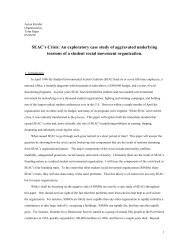
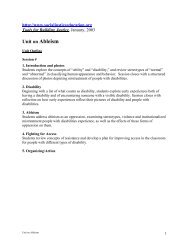

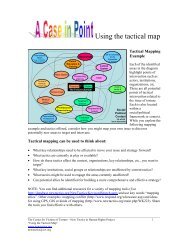
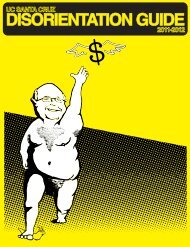

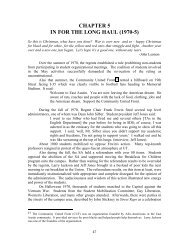


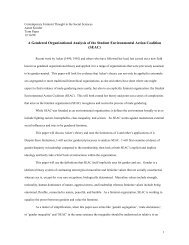

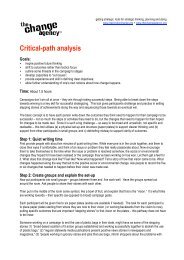

![Meaningful Student Involvement Research Guide [pdf] - SoundOut](https://img.yumpu.com/38822556/1/190x231/meaningful-student-involvement-research-guide-pdf-soundout.jpg?quality=85)